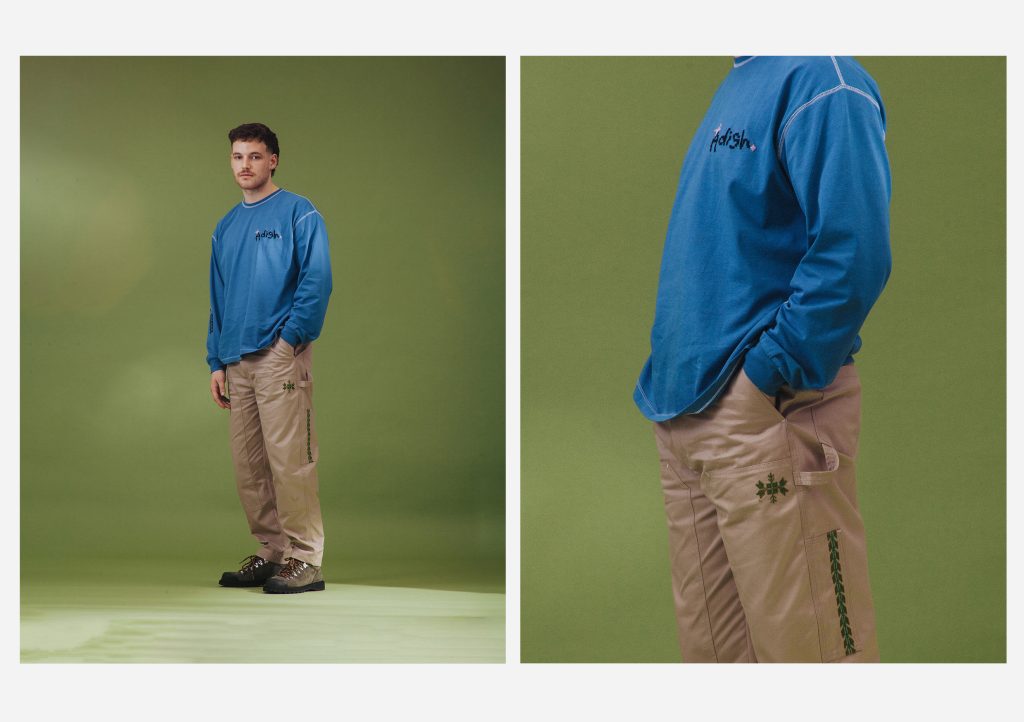Introducing: ADISH


ADISH is an Israeli-Palestinian brand launched in 2018 that uses clothing as a medium to spread awareness about sociopolitical issues at the heart of its region. Meaning Hebrew for ‘apathetic’ or ‘indifferent’, ADISH’s garments are underpinned by social commentary and a political voice that breaks barriers and inspires change. Marrying contemporary silhouettes with traditional Palestinian craft techniques, the Tel Aviv-based label sheds a light on local cultures with unique embroidered artwork and patterns. ADISH works closely with local Palestinian craftswomen in Hebron and the Ramallah and Dheisheh refugee camps. The label keeps centuries-old artisanal methods alive, celebrating and empowering the craftswomen that make its beautiful hand-stitched tatreez (Arabic for embroidery). Each ADISH garment is filled with meaning and sentiment – sewn with the location where it was embroidered and the name of the women’s embroidery group that produced the tatreez.
In conjunction with our first collection from ADISH at HIP, we caught up the brand’s Art Director Jordan Nassar to talk the brand’s origin story, the meaning of craftsmanship to him and effecting change through each collection.
Firstly – please tell us about yourself and your background?
My name is Jordan Nassar, I’m a Palestinian-American artist working with traditional Palestinian crafts. My primary medium is Tatreez, or Palestinian Embroidery, as well as wood-inlay work and glasswork.
How did ADISH’s partners come together?
I was doing an artist residency in Jaffa in 2017, and Amit contacted me through instagram and asked to do a studio visit. Amit and Eyal came to my studio and we hung out, went to lunch, and they told me all about Adish, which they were just beginning – they hadn’t made a collection yet. Later that week we went to Beit Jala to meet Palestinain Embroiderers, and our guide there was Qussay’s wife, which is how Qussay eventually joined Adish. It really all happened organically, we just all work well together and share a vision for the brand, and a passion for supporting Palestinian freedom.
How did the idea of ADISH first come about?
Amit and Eyal had the idea originally, to start a brand. I think they were both curious about Palestinian crafts and culture, as well as about doing something to advocate for Palestinian rights, and of course, they love fashion, especially streetwear. So all of these elements converged to form Adish.
What is your day to day role at ADISH?
I am Art Director of Adish, so generally I am responsible for concepts and general ideas for each collection. As a visual artist, my role is certainly more focused on the visual and conceptual elements. Color palettes, the story behind each collection – and how the story comes out through design elements – and maybe most importantly, I design the embroidery patterns that we use in each collection, drawing from traditional Palestinian motifs, but putting our own twist on them.
How important is craftsmanship to ADISH’s collections? What is the concept behind using locally-produced garments and hand-stitched embroidery?
Adish is all about the craftmanship. Starting with the fabrics, we are very selective in which fabrics to use, even to make our standard t-shirts. Of course the embroidery and other Palestinian crafts that we incorporate, such as bedouin weaving and majdalawi weaving, are very important – all hand-made, of course – but even the tailoring is very carefully monitored. For us, we want to produce as much as possible in Palestine – so not just the embroidery, but also the tailoring, sewing in the labels, etc. This is because supporting any and all Palestinian businesses is vital, and is something that we’re committed to doing consistently.
How do you connect with local crafts people?
Qussay is from Palestine so that’s the first step, helping us find different craftspeople and producers. But we also have connected in many other ways, such as through facebook, or simply by exploring and word of mouth.
Could you tell us a little bit about the history and tradition of Palestinian embroidery?
There is so much to say about this, and a lot of resources on the internet as well, but to sum it up, Palestinian embroidery, or Tatreez, is arguably the most emblematic cultural export from Palestine. Even though it’s just simple cross-stitch embroidery, applied in extremely dense blocks on clothing and homewares, Tatreez has come to represent Palestine, and is something that Palestinians in the diaspora around the world can do themselves or have in their homes, taking a piece of our culture with us.
How powerful is fashion as a medium to spread awareness and inspire change?
I actually think fashion is rarely used to effect change. In my opinion, it tends to be used for superficial activism, but focuses too much on the “spreading awareness”, assuming people will go and act differently just from seeing some slogan on a shirt, and rarely goes further and actually tries to make any tangible changes in the world or in people’s lives. This is part of the reason we are so intent on producing as much as possible in Palestine – because becoming a consistent and reliable client for factories, embroiderers and other craftspeople there is one way to actually effect people’s lives and well-being, and in a way that is not charity, but on the contrary, is empowering for everyone. Of course representation and education is important, but I feel that it too often stops short of tangible change, even small.
Keep up to date with ADISH here.
New to HIP for AW22 – ADISH. Online now.



